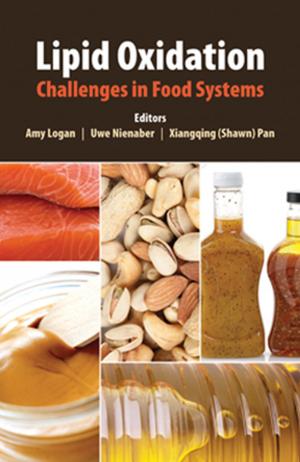Solution Thermodynamics and its Application to Aqueous Solutions
A Differential Approach
Nonfiction, Science & Nature, Science, Chemistry, Physical & Theoretical, Technology, Engineering, Chemical & Biochemical| Author: | Yoshikata Koga | ISBN: | 9780080551876 |
| Publisher: | Elsevier Science | Publication: | November 12, 2007 |
| Imprint: | Elsevier Science | Language: | English |
| Author: | Yoshikata Koga |
| ISBN: | 9780080551876 |
| Publisher: | Elsevier Science |
| Publication: | November 12, 2007 |
| Imprint: | Elsevier Science |
| Language: | English |
As the title suggests, we introduce a novel differential approach to solution thermodynamics and use it for the study of aqueous solutions. We evaluate the quantities of higher order derivative than the normal thermodynamic functions. We allow these higher derivative data speak for themselves without resorting to any model system. We thus elucidate the molecular processes in solution, (referred to in this book “mixing scheme), to the depth equal to, if not deeper, than that gained by spectroscopic and other methods. We show that there are three composition regions in aqueous solutions of non-electrolytes, each of which has a qualitatively distinct mixing scheme. The boundary between the adjacent regions is associated with an anomaly in the third derivatives of G. The loci of the anomalies in the temperature-composition field form the line sometimes referred as “Koga line. We then take advantage of the anomaly of a third derivative quantity of 1-propanol in the ternary aqueous solution, 1-propanol – sample species – H2O. We use its induced change as a probe of the effect of a sample species on H2O. In this way, we clarified what a hydrophobe, or a hydrophile, and in turn, an amphiphile, does to H2O. We also apply the same methodology to ions that have been ranked by the Hofmeister series. We show that the kosmotropes (salting out, or stabilizing agents) are either hydrophobes or hydration centres, and that chaotropes (salting in, or destablizing agents) are hydrophiles.
- A new differential approach to solution thermodynamics
- A particularly clear elucidation of the mixing schemes in aqueous solutions
- A clear understandings on the effects of hydrophobes, hydrophiles, and amphiphiles to H2O
- A clear understandings on the effects of ions on H2O in relation to the Hofmeister effect
- A new differential approach to studies in muti-component aqueous solutions
As the title suggests, we introduce a novel differential approach to solution thermodynamics and use it for the study of aqueous solutions. We evaluate the quantities of higher order derivative than the normal thermodynamic functions. We allow these higher derivative data speak for themselves without resorting to any model system. We thus elucidate the molecular processes in solution, (referred to in this book “mixing scheme), to the depth equal to, if not deeper, than that gained by spectroscopic and other methods. We show that there are three composition regions in aqueous solutions of non-electrolytes, each of which has a qualitatively distinct mixing scheme. The boundary between the adjacent regions is associated with an anomaly in the third derivatives of G. The loci of the anomalies in the temperature-composition field form the line sometimes referred as “Koga line. We then take advantage of the anomaly of a third derivative quantity of 1-propanol in the ternary aqueous solution, 1-propanol – sample species – H2O. We use its induced change as a probe of the effect of a sample species on H2O. In this way, we clarified what a hydrophobe, or a hydrophile, and in turn, an amphiphile, does to H2O. We also apply the same methodology to ions that have been ranked by the Hofmeister series. We show that the kosmotropes (salting out, or stabilizing agents) are either hydrophobes or hydration centres, and that chaotropes (salting in, or destablizing agents) are hydrophiles.
- A new differential approach to solution thermodynamics
- A particularly clear elucidation of the mixing schemes in aqueous solutions
- A clear understandings on the effects of hydrophobes, hydrophiles, and amphiphiles to H2O
- A clear understandings on the effects of ions on H2O in relation to the Hofmeister effect
- A new differential approach to studies in muti-component aqueous solutions















